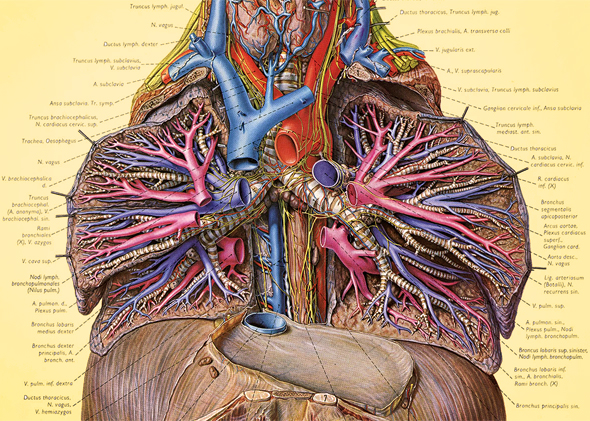Longform’s Best History Stories of 2013
Exiled Russians, Nazi anatomists, and trashy New Yorkers.

Eduard Pernkopf/Urban & Schwarzenberg. Scans via Codex99.
This week on Slate, we’ll be sharing our favorite articles of the year. For our full list—including the top 10 of the year, plus picks in sports, politics, tech, and more—check out Longform’s Best of 2013.
For 40 Years, This Russian Family Was Cut Off From All Human Contact, Unaware of WWII
Mike Dash • Smithsonian
A long vacation to the Siberian wilderness.
Thus it was in the remote south of the forest in the summer of 1978. A helicopter sent to find a safe spot to land a party of geologists was skimming the treeline a hundred or so miles from the Mongolian border when it dropped into the thickly wooded valley of an unnamed tributary of the Abakan, a seething ribbon of water rushing through dangerous terrain. The valley walls were narrow, with sides that were close to vertical in places, and the skinny pine and birch trees swaying in the rotors' downdraft were so thickly clustered that there was no chance of finding a spot to set the aircraft down. But, peering intently through his windscreen in search of a landing place, the pilot saw something that should not have been there. It was a clearing, 6,000 feet up a mountainside, wedged between the pine and larch and scored with what looked like long, dark furrows. The baffled helicopter crew made several passes before reluctantly concluding that this was evidence of human habitation—a garden that, from the size and shape of the clearing, must have been there for a long time.
Advertisement
How the corpses of Hitler’s victims haunt modern science.
In 1941, Charlotte Pommer graduated from medical school at the University of Berlin and went to work for Hermann Stieve, head of the school’s Institute of Anatomy. The daughter of a bookseller, Pommer had grown up in Germany’s capital city as Hitler rose to power. But she didn’t appreciate what the Nazis meant for her chosen field until Dec. 22, 1942. What she saw in Stieve’s laboratory that day changed the course of her life—and led her to a singular act of protest.
Advertisement
When New Yorkers lived knee-deep in trash.
It’s tempting to think of sacred tombs and ancient monuments as our best window into other cultures. But archaeologists have long known that if you really want to understand a civilization, to know its people’s passions, weaknesses, and daily rituals, look no further than their garbage.
How the Hollywood publicity racket evolved.
On September 10, 2012, the gossip sites were whispering: Two stars had been married, in secret, over the weekend, and readers were clamoring for details. Where had the marriage taken place? In front of how many people? Who designed the bride’s dress? What did the ring look like? What did the groom’s ex-fiancée (famous) and ex-wife (even more famous) think of the union? Most importantly, how did the pair manage to evade the public eye?
What people have eaten when they’ll never eat again.
The idea of a meal before an execution is compassionate or perverse, depending on your perspective, but it contains an inherently curious paradox: marking the end of a life with the stuff that sustains it seems at once laden with meaning and beside the point. As Barry Lee Fairchild, who was executed by the state of Arkansas in 1995, said in regard to his last meal, “It’s just like putting gas in a car that don’t have no motor.”
For more of the year’s great writing, check out Longform’s Best of 2013.
